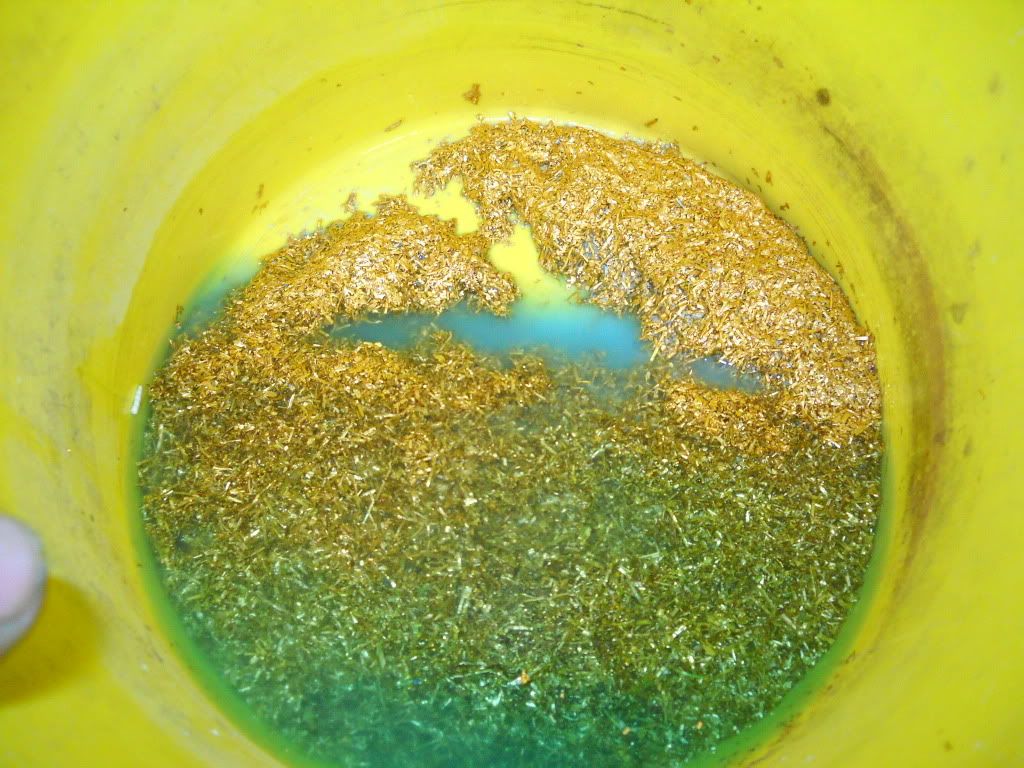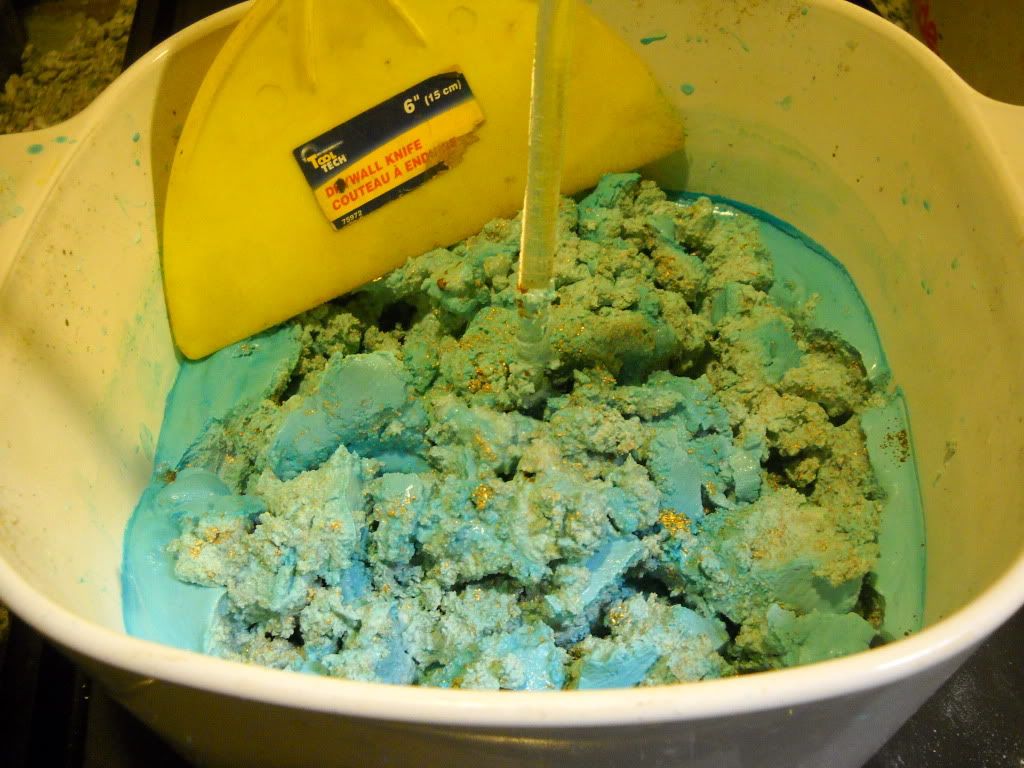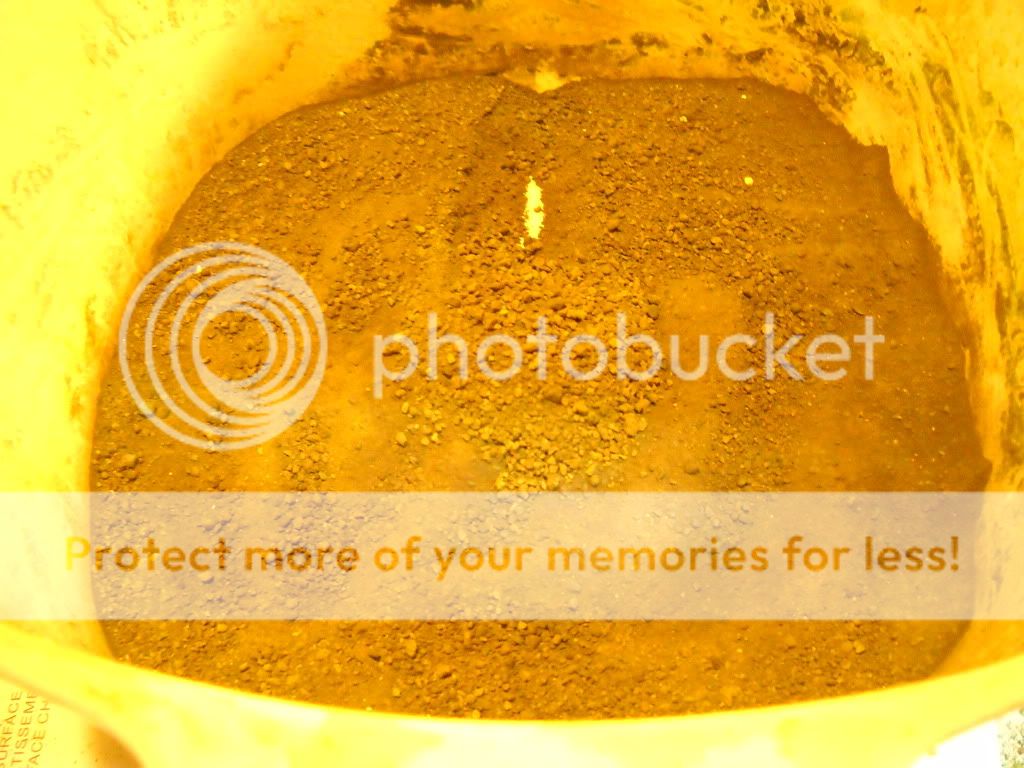g_axelsson,
Quote:
"So when trying to distill nitric acid from nitrates with metastannic acid it is only the copper and zinc nitrates that forms nitric acid. It would be better to decant / filter off the nitrates from the solids and create your nitric acid from that. Then treat the solids separately."
The salts in discussion were concentrated and almost dried so they would contain nitrate salts of copper (zinc) and tin all of which would form HNO3 in the reaction of distilling with sulfuric acid, and be converted to sulfates in the reaction.
The tin in solution as mettastannic acid H2SnO3 really does not dissolve, if captured in a filter as gelatin or dried to salts (with the copper salts), would be a salt of nitric acid and tin, thus a tin nitrate salt, although I am unsure how acidic the tin salts would remain with the copper (zinc) salts, the tin is still a salt of nitric acid thus a tin nitrate salt.
The soluble copper nitrate solution when dried or almost dry to crystallized salts also is a salt of nitrates as well as any zinc if these salts came from brass instead of just copper scrap.
Adding these nitrate salts (I presume Mainly copper nitrate due to proportion of metals dissolved to from these salts), to a distilling rig, adding dilute sulfuric acid, and distilling.
The sulfuric acid will begin reacting with these nitrate salts, dissolving them into solution, and NOx gas would begin to evolve, beginning to convert them into copper and tin sulfate, but also the hydrogen from the sulfuric acid would also again form nitric acid in this solution.
So at the beginning we would have a solution of copper sulfate and copper nitrate, mixed with tin sulfate and metastannic acid, (and zinc if involved) some NOx gases evolving but most of this gas would just stay in the dilute solution.
At first in the dilute solution of sulfuric acid most of these gases would not leave solution to much extent, but with heat these would begin to evolve, at first mostly water vapors with very little acidic fumes or NOx fumes, but as the distilling of the solution proceeded the nitric vapors would be more concentrated, until the 68% HNO3 was distilling off with the NOx gas, the copper and tin nitrates would further be convert to copper and tin sulfates in solution as the nitric acid was removed from the system by distilling it off, eventually you would be left with no nitric or nitrates in the distilling rig only copper (zinc if these salts came from brass) and tin sulfates dissolved in solution left in the boiling vessel with your gold.
(Nitric acid will distill off leaving only a soluble metal sulfate solution, and the insoluble undissolved gold).
The metals do not leave as gas in the fumes, from the distilling rig, and neither will the sulfuric acid (too high of a boiling point).
Another action of the reaction is as we are distilling, as the nitric leaves solution and the sulfuric acid in the boiling reactor concentrates the sulfuric acid, taking over the metals in solution, the tin is no longer metastannic acid but converts to tin sulfate, the copper converts to copper sulfate, and the gold is freed to settle in this solution of water soluble metal sulfates.
Once the reaction is complete the vessel opened and this solution is diluted with boiling water, the reason for the boiling water is because this should be done while the concentrated copper sulfate solution is still hot, this keeps from breaking the glass with thermal shock, and dilutes the thick copper sulfate syrup while still hot so the crystals will not form before solution is cooled and thus easier to be diluted.
The gold in this copper and tin sulfate solution can now be left to cool, the gold will settle to the bottom of the vessel, and then we can decant the sulfate solution from our gold.
(This method will also work for other salts or very concentrated solutions, as an alternative. or a pre-step to break the colloids, dissolve (or convert) the tin and copper or other metals, the hot concentrated sulfuric acid can also break the colloids of the gold if any chlorides were involved or if we had a solution of HCL or copper chloride salts and colloidal gold mixed with gold flakes, the HCl can be distilled off, the concentrated sulfuric breaking the gold colloids, tin in solution converted to soluble tin sulfate, and copper chloride converted to copper sulfate, and the gold freed to settle in the solution of soluble copper, tin or other metal sulfates).
The gold separated by this method can then be incinerated (without the large volume of other metal salts) before treating further.
This distilling method would be best with large batches of metal salts, or large batches of concentrated solutions, where filtering or separating gold from the large volume of salts or solutions would be troublesome, or it would be troublesome to incinerate this large volume of salts, because of the large volume of gases that would form from the volume of salts, and the volumes of toxic gases formed by the incineration of these metal salts.









